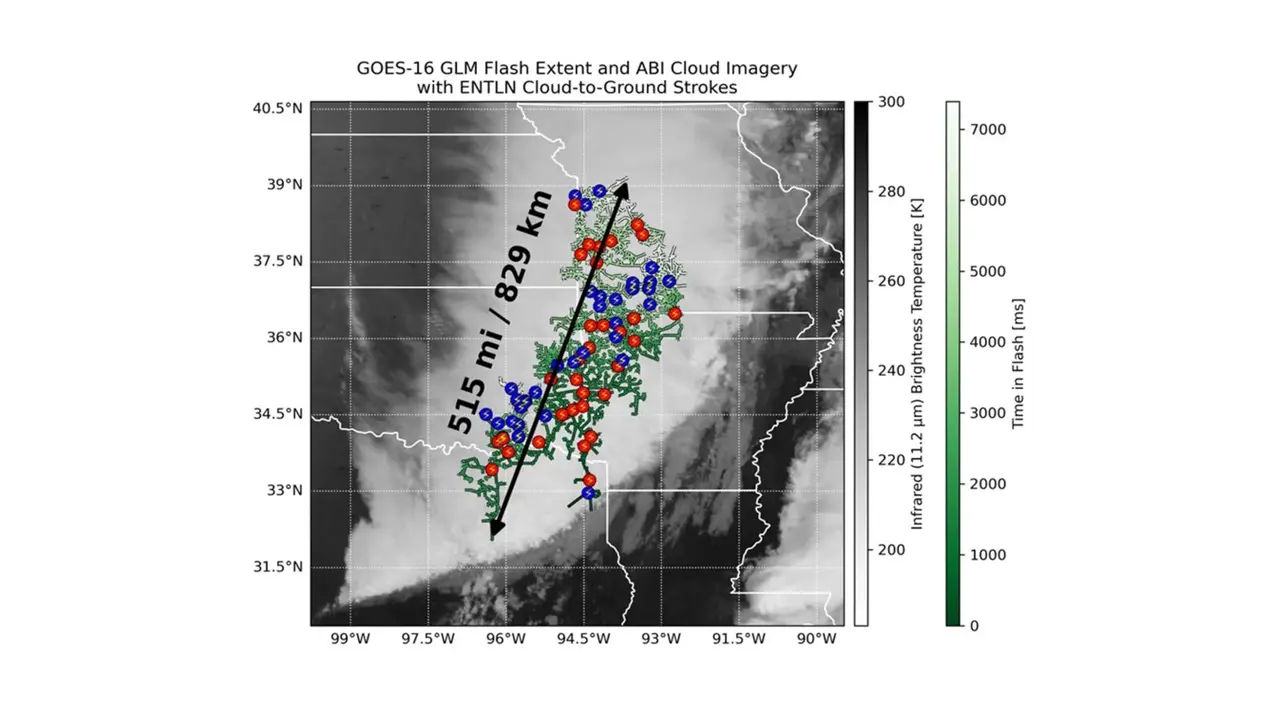The World Meteorological Organization (WMO) officially recorded a natural event that occurred in the Midwestern United States in 2017. The massive lightning bolt, which stretched from East Texas to near Kansas City, reached a total length of 829 kilometers, making it the longest single lightning flash ever observed. This distance is approximately the same as a 90-minute airplane flight.
World’s longest lightning flash recorded
According to a statement by the WMO, the lightning flash is a type of flash commonly observed in large-scale convective storm systems called “megaflashes.” These flashes are generated by complex discharges triggered by large electrical fields in the atmosphere and can extend for hundreds of kilometers. This event, which occurred on October 22, 2017, and was reanalyzed and recorded approximately eight years later, surpassed the previous record of 768 kilometers set in 2020.

The reason such extreme natural events weren’t detected in previous years is that ground-based observing devices were unable to capture electrical movements of this magnitude. However, advanced satellite systems such as the Geostationary Lightning Mapper (GLM) on the US GOES-R satellite, Europe’s Meteosat MTG Lightning Imager, and China’s Y-4 Lightning Mapping Imager are now able to measure the length and duration of atmospheric lightning more precisely.
Prof. Randall Cerveny of the WMO’s Committee on Climate and Weather Extremes says that new technologies are enabling the re-evaluation of many extreme weather events that went unnoticed in the past. Cerveny states that such analyses may lead to even larger records in the near future.
Furthermore, according to other striking data in the WMO’s archives, another lightning event that occurred over Uruguay and Argentina on June 18, 2020, lasted 17.1 seconds, making it the longest-lasting lightning event ever recorded.
Official records also state that in 1975, a lightning strike in Zimbabwe killed 21 people, and in 1994, a lightning-caused fire in the Egyptian town of Dronka killed 469 people.
Michael J. Peterson of the Georgia Institute of Technology states that modern observational technologies not only generate academic knowledge but also help better understand the risks posed by lightning.













